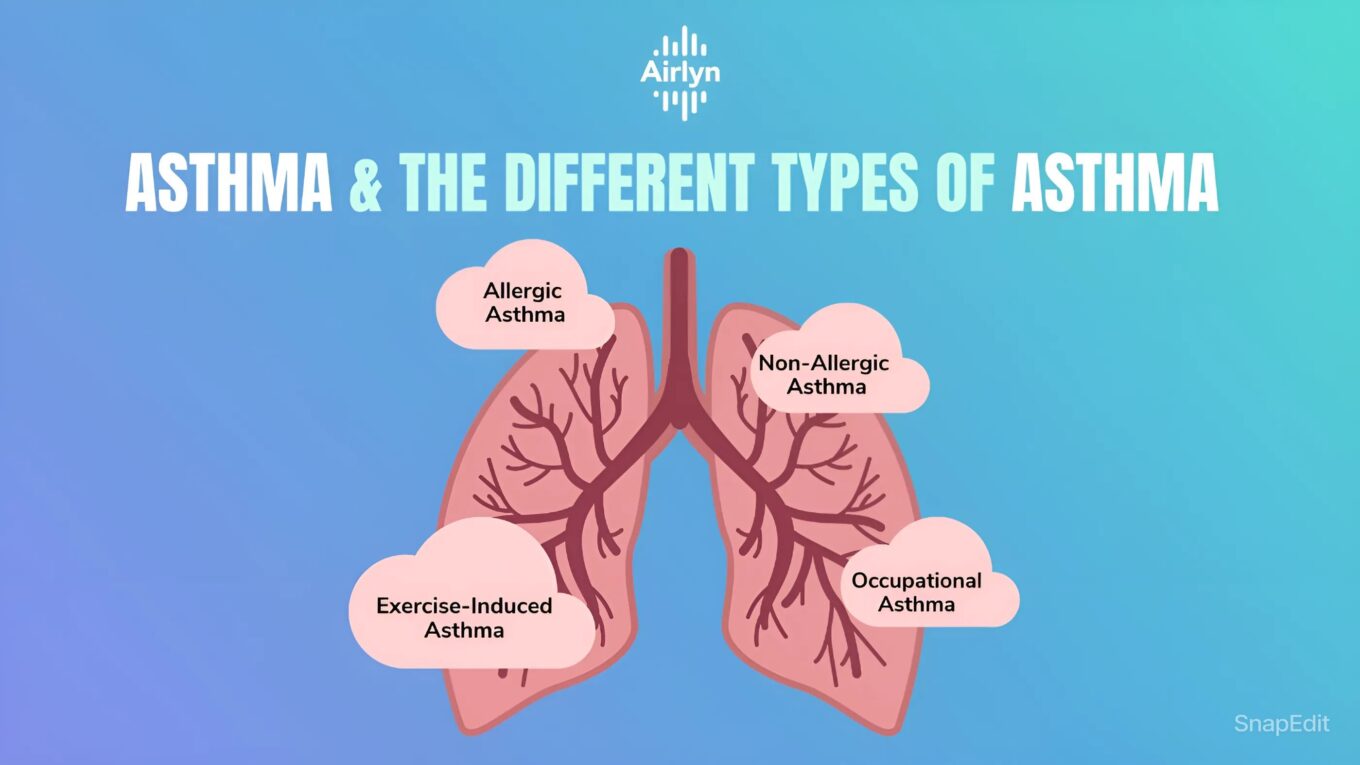Introduction:
Asthma is a chronic respiratory condition characterized by inflammation and narrowing of the airways,
leading to symptoms such as wheezing, shortness of breath, chest tightness, and coughing.
There are several types of asthma, each with its own triggers and characteristics.
Here are the main types:
1. Allergic Asthma:
Allergic asthma is the most common type of asthma and is triggered by exposure to allergens such as
pollen, dust mites, pet dander, mold, or certain foods. When an allergic person inhales these triggers,
it can cause an immune response in the airways, leading to inflammation and asthma symptoms.
2. Non-Allergic Asthma:
Non-allergic asthma, also known as intrinsic asthma, is triggered by factors other than allergens.
These triggers may include respiratory infections (such as colds or flu), irritants in the air
(such as smoke, pollution, or strong odors), cold air, exercise, or stress. People with non-allergic asthma
may experience symptoms similar to those with allergic asthma but without an allergic trigger.
3. Exercise-Induced Asthma (EIA):
Exercise-induced asthma occurs during or after physical exertion. Vigorous exercise can cause the airways to narrow, leading to symptoms such as
coughing, wheezing, chest tightness, and shortness of breath. EIA can affect people with or withou
t a history of asthma and is often more common in cold, dry air or when exercising in
environments with high levels of allergens or pollutants.
4. Occupational Asthma:
Occupational asthma is caused by exposure to irritants or allergens in the workplace.
Common triggers include chemicals, dust, fumes, gases, or biological substances. Symptoms of occupational asthma may develop gradually over time or suddenly upon exposure to
the trigger and can vary depending on the type and severity of exposure.
5. Childhood Asthma:
Childhood asthma refers to asthma that develops in children, typically before the age of 5.
Symptoms may include wheezing, coughing (particularly at night), shortness of breath, chest tightness, and recurrent respiratory infections.
Childhood asthma can be allergic or non-allergic and often persists into adulthood,
although symptoms may improve or worsen over time.
6. Adult-Onset Asthma:
Adult-onset asthma refers to asthma that develops in adulthood, often after the age of 20.
It can occur in people with no history of asthma or in individuals who had asthma as children but outgrew it.
Adult-onset asthma may be triggered by factors such as respiratory infections, hormonal changes
(such as pregnancy or menopause), exposure to irritants, or changes in environment or lifestyle.
7. Aspirin-Exacerbated Respiratory Disease (AERD):
Also known as aspirin-sensitive asthma, AERD is characterized by asthma symptoms that
worsen upon ingestion of aspirin or other nonsteroidal anti-inflammatory drugs (NSAIDs) such as ibuprofen or naproxen.
People with AERD may also experience nasal polyps and sinusitis.
8. Cough-Variant Asthma:
In cough-variant asthma, coughing is the predominant symptom, often without the classic wheezing or
shortness of breath associated with other types of asthma.
Cough-variant asthma may be triggered by allergens, respiratory infections, exercise, or exposure to irritants.
9. Steroid-Resistant Asthma:
Some people with asthma may have asthma symptoms that do not respond well
to corticosteroid medications, which are commonly used to reduce airway inflammation.
This type of asthma is known as steroid-resistant asthma and may require alternative treatments
or higher doses of medication to control symptoms.
10. Eosinophilic Asthma:
Eosinophilic asthma is characterized by high levels of eosinophils,
a type of white blood cell, in the airways.
Eosinophils play a role in allergic reactions and inflammation.
This type of asthma may be triggered by allergens, but it is also associated with severe asthma exacerbations
and may require targeted therapies to reduce eosinophilic inflammation.
11. Neutrophilic Asthma:
Neutrophilic asthma is characterized by high levels of neutrophils,
another type of white blood cell, in the airways.
Unlike eosinophilic asthma, which is associated with allergic inflammation,
neutrophilic asthma is often triggered by non-allergic factors
such as respiratory infections, pollutants, or cigarette smoke.
12. Exercise-Induced Bronchoconstriction (EIB):
Exercise-induced bronchoconstriction, also known as exercise-induced bronchospasm,
is a transient narrowing of the airways that occurs during or after exercise.
While similar to exercise-induced asthma, EIB may occur in people without a history of asthma
and is more focused on the physical response of the airways to exercise
rather than underlying asthma inflammation.
Understanding the different types of asthma and their triggers is crucial for effective management and treatment. People with asthma should work closely with healthcare professionals to identify their triggers, develop an asthma action plan, and implement appropriate strategies to control their symptoms and reduce the risk of asthma attacks.





